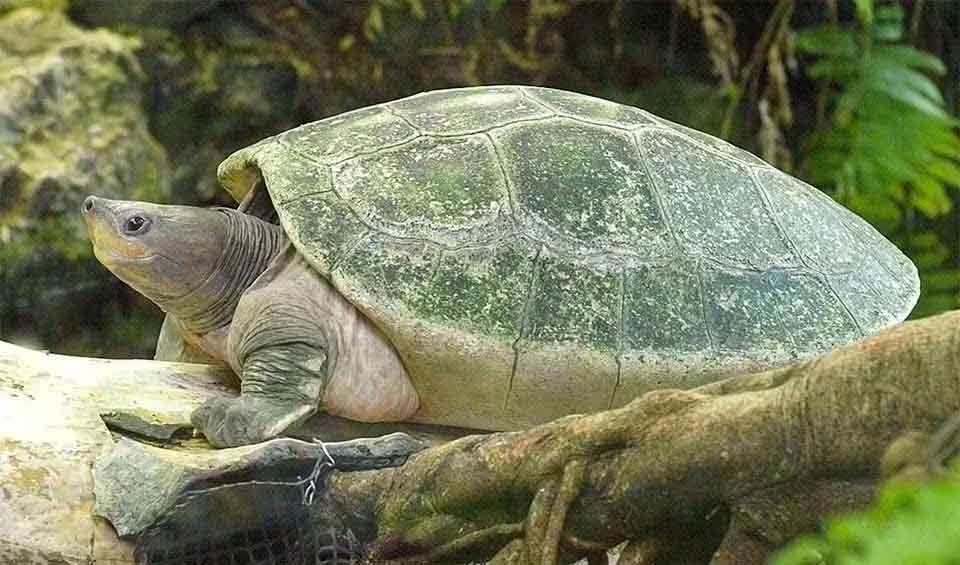Its inability to excrete excess salt from its body is a trait that confines it strictly to freshwater environments. This physiological limitation means that painted terrapins must inhabit rivers, lakes, and swamps, where salinity is not a concern, and are naturally found in the verdant wetlands of countries such as Thailand, Sumatra, and Borneo.
Despite their name, which might suggest a vibrant display, painted terrapins generally exhibit a more subdued coloration for most of the year. Their shells are typically a muted blend of grey and brown hues, allowing them to blend seamlessly with their surroundings to avoid predators. Only during the breeding season do the males undergo a remarkable transformation. In a display designed to attract mates, they develop a striking bright red and sometimes even blue stripe on their heads, making them one of the more visually dramatic species during this time.
The global trade of the painted terrapin has contributed to its spread far beyond its native habitats, often to keep them as exotic pets. This trade, coupled with rapid habitat destruction due to logging, agriculture, and the development of waterways, has led to a drastic reduction in their numbers in the wild. As a result, the IUCN has classified the species as Critically Endangered.
Distribution
 Brunei
Brunei Indonesia
Indonesia Malaysia
Malaysia Thailand
ThailandDid you know?
- Painted terrapin was listed in The World’s Most 25 Endangered Freshwater Turtles and Tortoises 2011.
Anything we've missed?
Help us improve this page by suggesting edits. Glory never dies!
Suggest an editGet to know me
Terrestrial / Aquatic
Altricial / Precocial
Polygamous / Monogamous
Dimorphic (szie) / Monomorphic
Active: Diurnal / Nocturnal
Social behavior: Solitary / Pack / Herd
Diet: Carnivore / Herbivore / Omnivore / Piscivorous / Insectivore
Migratory: Yes / No
Domesticated: Yes / No
Dangerous: Yes / No




